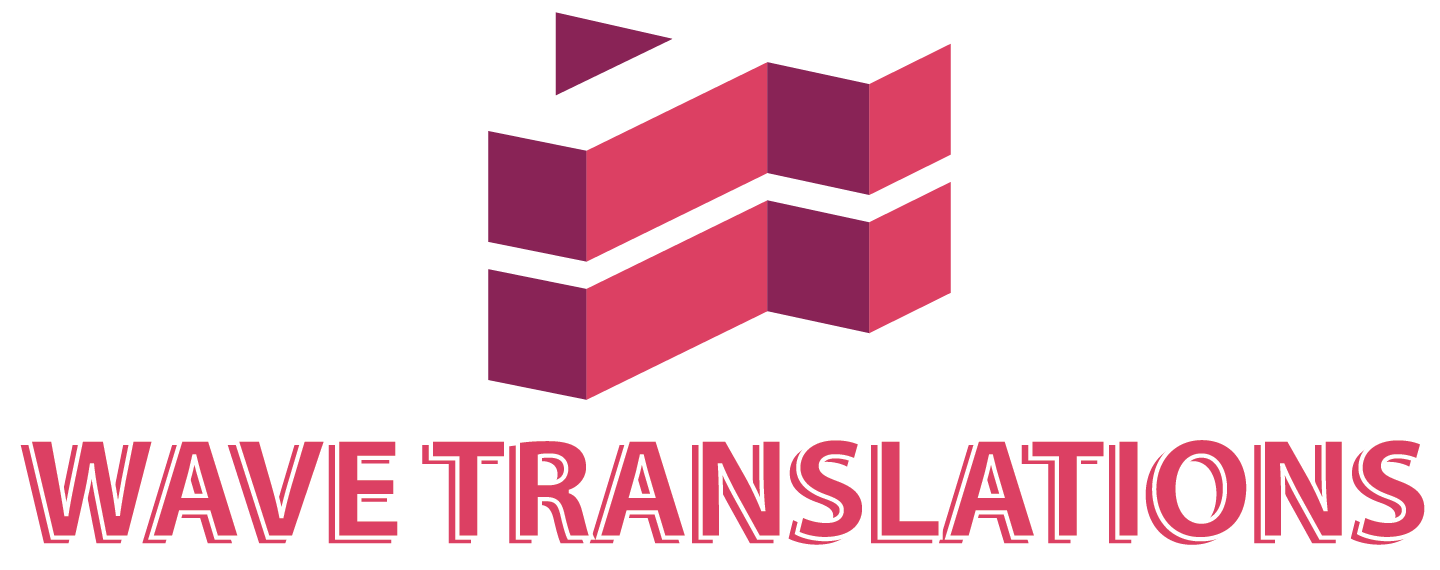In our increasingly interconnected world, effective communication across languages is essential. Did you know that over 80% of the world’s population doesn’t speak English fluently? This language gap makes professional interpretation services essential for businesses, healthcare providers, governments, and everyday interactions.
Whether it’s a doctor explaining a diagnosis, a lawyer in a courtroom, or a CEO negotiating an international deal, interpreters ensure everyone understands and is understood. The demand for interpretation services is skyrocketing. The global interpretation services market was valued at 19.1 billion in 2022 and is projected to grow by 27.26 billion by 2030 (as per cognitive market research). This growth is driven by globalization, immigration, and laws requiring language access in critical sectors like healthcare and legal systems.
What Are Interpretation Services?
Interpretation involves orally translating spoken language from a source language (the speaker’s language) to a target language (the listener’s language) in real time. Unlike translation, which deals with written text, interpreters must process information instantaneously, requiring exceptional linguistic agility, cultural competence, and subject-matter expertise.
Historical Evolution
- Post-WWII Era: The Nuremberg Trials (1945–1946) marked the formalization of modern interpretation. For the first time, interpreters used soundproof booths and microphones to deliver simultaneous interpreting to multilingual audiences.
- Digital Revolution: The 1990s saw the rise of remote interpreting via telephone and early video conferencing tools, though adoption was slow due to technological limitations.
- COVID-19 Impact: The pandemic accelerated virtual solutions, with the remote interpreting market growing by 14% annually since 2020, according to CSA Research.
On-Site Interpretation Services
On-site interpreting requires interpreters to be physically present with clients, speakers, and audiences. This method is ideal for high-stakes scenarios demanding cultural nuance, non-verbal cues, and immediate feedback.
Key Applications
Legal Proceedings
- Courtrooms rely on simultaneous interpretation services for trials involving non-native speakers. For example, in U.S. federal courts, Title VI of the Civil Rights Act mandates free interpreters for limited-English-proficient individuals.
- Consecutive interpreting is used for witness testimonies, where pauses allow for accurate translation of complex legal jargon.
Healthcare
- Miscommunication in medical settings can lead to misdiagnoses or treatment errors. Hospitals like Johns Hopkins use on-site interpreters for sensitive consultations, reducing errors by 50%.
- Interpreters also assist with informed consent forms, ensuring patients understand procedures.
Corporate Diplomacy
Multinational companies like Siemens and Unilever use on-site interpreters for contract negotiations, factory audits, and employee training.
Advantages
- Non-Verbal Communication: Interpreters observe gestures, facial expressions, and tone, which constitute 55% of communication (Albert Mehrabian’s 7-38-55 Rule).
- Immediate Clarification: On-site interpreters can ask speakers to rephrase ambiguous statements.
Challenges
- Cost: Deploying interpreters internationally involves travel, accommodation, and per-diem expenses.
- Logistical Complexity: Coordinating schedules for rare language pairs (e.g., Icelandic to Korean) can delay projects.
Virtual Interpreting
Virtual interpreting leverages digital platforms to connect interpreters with clients remotely. The global shift toward hybrid work models has made this method indispensable for businesses, governments, and healthcare providers.
Types of Virtual Interpretation Services
Over-the-Phone Interpreting (OPI)
- A three-way call system used in emergencies (e.g., 911 dispatch) or customer service.
Video Remote Interpreting (VRI)
Interpretation services utilizes and combines video conferencing tools (e.g., Zoom, KUDO) with interpretation.
Applications
- Telehealth: Cleveland Clinic uses VRI for remote patient consultations, improving access for rural populations.
- Education: Schools deploy VRI for parent-teacher conferences involving non-English-speaking families.
Modes of Interpreting Services
Consecutive Interpreting
Consecutive interpreting requires the interpreter to listen to a speaker, retain information, and deliver the translation during natural pauses. Common in legal, medical, or business settings, this method prioritizes accuracy over speed.
The interpreter relies on notes and memory to reconstruct the message, making it ideal for dialogues or short speeches. Unlike real-time methods, it introduces a deliberate delay, allowing time for precise translation.
Simultaneous Interpreting
Simultaneous interpreting services occurs in real time, with the interpreter translating while the speaker continues talking. Used in conferences, live events, or broadcasts, interpreters work from soundproof booths, using headsets to hear and relay speech instantly.
This mode maintains the event’s pace but requires intense focus, as the interpreter must process and speak simultaneously. It eliminates pauses but demands exceptional multitasking skills. Unlike consecutive interpreting, it relies on technical setups like microphones and audio systems.
Whispered Interpreting
Whispered interpretation services involves the interpreter softly translating directly into the listener’s ear in real time. Used in small meetings or guided tours, it requires no equipment beyond proximity to the listener.
A subset of simultaneous interpreting, it’s discreet and informal but limited to one or two listeners due to the interpreter’s low volume. Unlike booth-based methods, it avoids technical logistics but strains the interpreter’s voice over time.
Liaison Interpreting
Liaison interpreting services facilitates bidirectional communication, often in community, diplomatic, or business contexts. The interpreter translates short phrases between parties, ensuring mutual understanding.
This method is utilized in informal negotiations or social services, and it emphasizes cultural mediation and brevity. Unlike consecutive interpreting, which focuses on extended monologues, liaison interpreting thrives on quick exchanges, requiring fluency in both languages.
Travel Interpreting
Travel interpretation services involves interpreters accompanying individuals or groups during trips to facilitate communication in foreign environments. This method is common in tourism, business expeditions, or diplomatic missions, where interpreters assist with language barriers, cultural nuances, and logistical challenges.
They may translate during meetings, tours, or emergencies, ensuring smooth interactions with locals. This mode requires adaptability, as interpreters often work in dynamic settings like airports, hotels, or remote locations. Unlike conference-based interpreting, travel interpreters act as cultural liaisons, offering real-time solutions for unexpected scenarios.
Relay Interpreting
Relay interpretation services is used when no direct interpreter exists between two languages. A third “pivot” language bridges the gap: Interpreter A translates from Language 1 to Language 2 (e.g., English), and Interpreter B renders Language 2 to Language 3.
This method is common in multilingual conferences or rare language pairs, and ensures accessibility but risks delays or inaccuracies due to dual translation layers. It demands precise coordination between interpreters to maintain message integrity.
| Mode | Technique | Best For | Challenges |
| Simultaneous | Interpreter translates in real-time. | Conferences, UN summits, live broadcasts. | Requires advanced tech (booths, headsets). |
| Consecutive | Speaker pauses for interpretation. | Medical consults, court testimonies. | Doubles event duration. |
| Whispered (Chuchotage) | Interpreter whispers translations to 1–2 people. | Museum tours, small meetings. | Noise interference in crowded spaces. |
| Liaison | Bilingual interpreter mediates dialogue. | Business negotiations, diplomatic talks. | Requires fluency in both languages. |
| Travel/Escort | Interpreter accompanies clients on trips. | International tours, trade shows. | High cost for extended assignments. |
| Relay | Uses a third language (e.g., English) as a bridge. | Multilingual summits with rare languages. | Risk of “double distortion” in messages. |
Modes of Interpreting: Techniques, Use Cases, and Challenges

Industry-Specific Applications of Interpretation Services
Healthcare Interpretation Services
The healthcare sector heavily relies on medical interpreting to ensure patient safety and compliance. Miscommunication can lead to life-threatening errors, driving demand for interpreters in hospitals, telehealth consultations, and clinical trials. The U.S. Bureau of Labor Statistics projects a 24% growth in interpreter employment from 2020 to 2030, fueled by rising medical tourism and regulations like Title VI of the Civil Rights Act mandating language access. Remote video interpreting (VRI) now integrates directly into Electronic Health Records (EHR), streamlining workflows and improving care for non-English speakers.
Legal Interpretation Services
Legal interpretation services is crucial for court proceedings, depositions, and attorney-client interactions to uphold due process. In addition, legal translation services dominate the market, with high demand driven by U.S. immigration for languages such as Spanish and Mandarin. This growing need for diverse language skills highlights the importance of skilled interpreters in the legal field. For example, TranslationsToday provided pro bono Pashto and Dari interpretation for Afghan refugees seeking asylum. The sector is projected to grow at a CAGR of 5.6% through 2029, supported by stringent regulations and cross-border litigation.
Education Interpretation Services
Schools and universities use interpreters to support multilingual students and faculty. The National Center for Education Statistics reports 10% of the U.S. population speaks a non-English language at home, necessitating services for parent-teacher meetings and international student programs. E-learning platforms also integrate multilingual content, with the global language services market expected to reach $129.61 billion by 2034, partly driven by digital education demands.
Business & Finance
Global enterprises depend on conference interpreting for negotiations, mergers, and multilingual stakeholder meetings. The global interpretation services market, valued at $19.1 billion in 2022, is projected to grow at 6.1% CAGR through 2030, driven by cross-border trade and remote work. Hybrid approaches combining AI tools with human expertise enhance efficiency in financial reporting and investor communications.
Government & Diplomacy
Governments employ interpreters for international summits, immigration services, and public policy dissemination. The EU mandates language access in healthcare, while the U.S. Department of State relies on interpreters for diplomatic engagements. North America accounts for 36.7% of the global market, driven by immigration and federal compliance requirements. Remote interpreting platforms now support real-time translation for multilingual public hearings and refugee support programs.
Tourism & Hospitality Interpretation Services
The tourism industry uses interpreters to enhance traveler experiences, particularly in regions like Asia-Pacific, where medical tourism and international visitors drive demand. The Middle East’s tourism sector, for instance, grew significantly due to 13% annual increases in language support needs. The global interpretation market is projected to reach $31.8 billion by 2030, with travel agencies and hotels adopting on-demand phone and video services.
Media & Entertainment Interpretation Services
Streaming platforms like YouTube, where 70% of viewers are non-English speakers, leverage transcreation to localize content. Media companies use interpreters for dubbing, subtitling, and live event coverage, contributing to the $73.65 billion language services market in 2024. AI-driven tools now assist in real-time captioning, though human interpreters remain vital for cultural nuance.
Technology & IT Interpretation Services
The tech sector integrates AI and cloud-based platforms to scale interpretation services. The language services market, driven by IT localization and software adaptation, is forecast to grow at 6.5% CAGR through 2034. Innovations like EHR-integrated VRI and AI transcription tools are reshaping workflows, with companies like Boostlingo leading in telehealth solutions.

Market Growth & Future Trends of Interpretation Services
|
Market Growth & Future Trends |
||
| Metric | 2023 | 2030 Projection |
| Global Interpretation Services Market | $54.6 billion | $96.2 billion |
| Remote Interpreting Adoption Rate | 42% | 68% |
| Demand for Rare Language Pairs | 12% | 23% |
| AI Adoption in Interpretation Services | 35% | 60% |
| Telehealth Interpretation Demand Growth | 28% | 45% |
| Legal Interpreting Sector Growth (CAGR) | 5.60% | 6.20% |
| Video Remote Interpreting (VRI) Adoption | 40% | 65% |
| Global Language Services Market Size | $73.65 billion | $129.61 billion |
| Hybrid Events Using Remote Interpreting | 55% | 78% |
| Education Sector Demand Growth | 18% | 30% |
(Sources: Grand View Research, CSA Research, Bureau of Labor Statistics)
Conclusion
Choosing the right interpretation services—whether on-site interpreting for high-stakes negotiations or video remote interpreting for telehealth—can make or break cross-cultural communication. As industries evolve, partnering with a trusted provider like Wave Translations ensures seamless, accurate, and culturally attuned solutions.
Wave Translations offers end-to-end interpretation services, including simultaneous interpreting, consecutive interpreting, and medical interpreting, backed by cutting-edge technology and certified professionals. So are you ready to break language barriers? Request a quote today and let us empower your global conversations.


